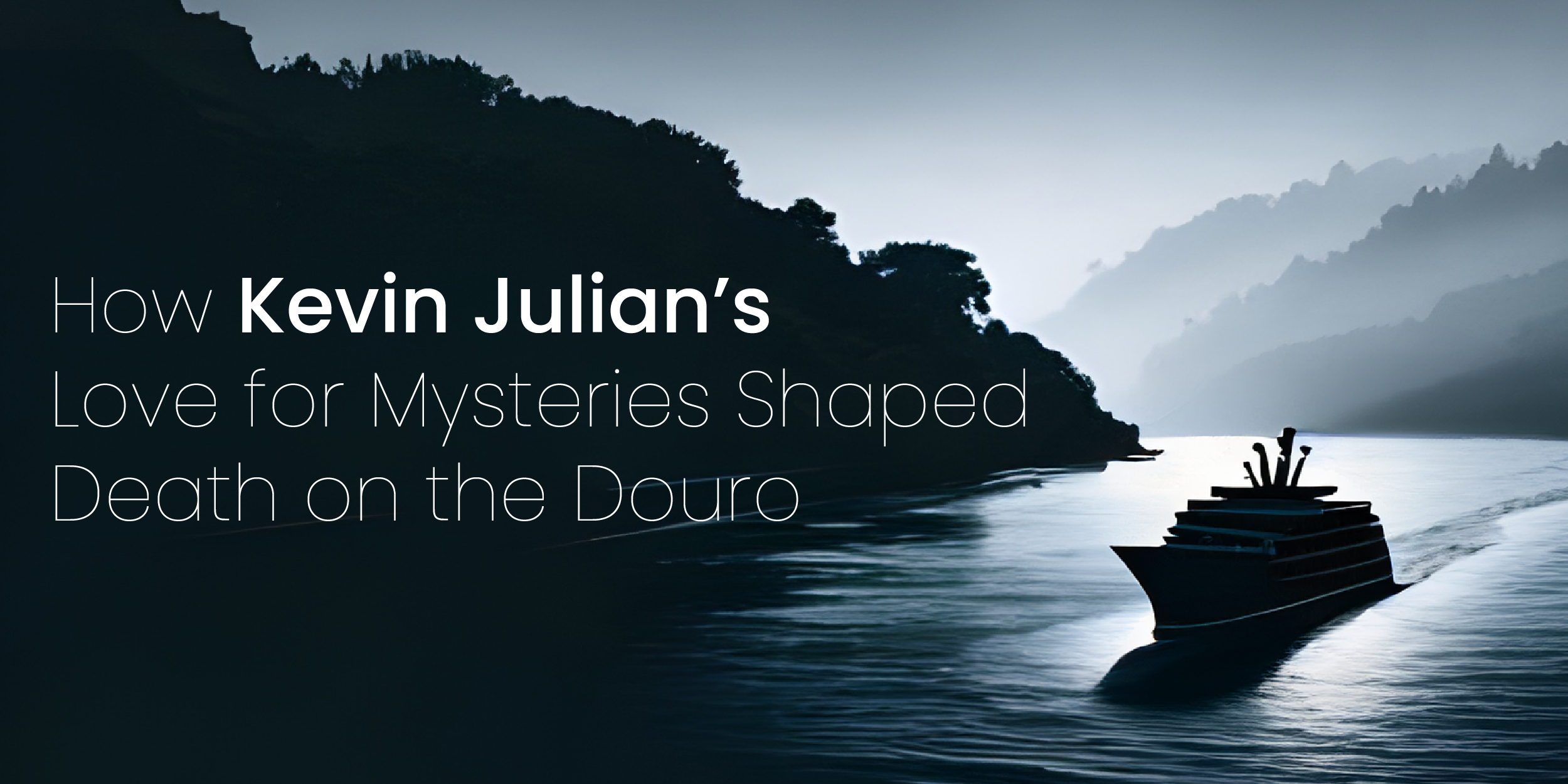Death on the Douro, Kevin Julian’s debut book, is a tribute to the traditional mystery genre as much as a murder mystery set on a scenic river cruise. Every page of the book reflects Julian’s intense passion for mysteries, from the evocative setting onboard the MV Duke of Sussex to the astute clues and distinctive characters. Julian, who has always loved classic whodunits, draws a lot of inspiration for his book from great writers, classic mystery stories, and his longtime love of riddles.
See how Kevin Julian’s passion for mystery novels shaped his first novel and why “Death on the Douro” embodies the spirit of a great murder mystery.
The Allure of Puzzle-Solving
Death on the Douro’s layout makes puzzles and Julian’s love of them clear. Julian enjoys solving puzzles and crosswords, so he knows how satisfying it is to put together seemingly unconnected small clues to create a bigger picture. Cleverly, planted clues abound in every chapter of Death on the Douro, including vanishing bags, misplaced champagne bottles, aging press articles, and even strangely clean fingernails.
Careful readers will find cues to assist them in solving the crime with Mary, as Julian deftly incorporates these clues throughout the narrative. This strategy keeps the story interesting and motivates readers to pay close attention to every detail. As much as Julian delighted in solving clues in his favorite mysteries, he designed Death on the Douro to be a riddle that requires readers to actively engage in the research process. Julian has written a novel that is as much a mental struggle as it is an exciting story, all while incorporating clues that seem insignificant at first but become progressively important.
An Extensively Detailed Scene
A river cruise along the picturesque Douro River is one of the settings that contributes to Death on the Douro’s allure. Julian’s preference for dramatic backdrops in mysteries and his love of travel are evident in his choice of setting. By fusing the serenity of the river with the suspense of a murder investigation, Julian creates an immersive experience for readers, drawing inspiration from the Douro Valley’s beautiful scenery and historical significance.
Julian was also able to examine the dynamics of a small, confined community—a traditional mystery trope—by basing the book around a river cruise. He enjoyed the chance to create a setting in which all of the characters are near to one another and their interactions are clearly visible. Characters are unable to leave the restricted area and are forced to confront one another as the inquiry progresses, which heightens the tension. Death on the Douro exhibits Julian’s profound understanding of how setting can raise the stakes in a story, resulting in an eerie yet alluring mood.
A Group of Enduring Personas
A cast of vibrant, unique characters is another element Julian uses to create a narrative that embodies the style of great mysteries. Readers get to know a wide range of characters in Death on the Douro, including the well-known travel blogger Florence Bordey, a retired health club owner and his companion, a Romanian mobster, and a Cambridge history professor. With individual histories, goals, and secrets, every character in the story is distinct and well-developed.
Julian’s background as a retired lawyer provided him with understanding of human nature, which he utilized to give his characters nuance and complexity. Just as he delighted in piecing together intricate motivations in his favorite mysteries, he went to great lengths to craft characters with nuanced personalities that make each one seem like a real person with nuanced aspects. Julian’s dedication to character development is seen in the way he progressively uncovers the traits of his characters, creating suspense and keeping readers guessing.
Honoring Vintage Mystery Thrillers
A delight of Death on Douro is Julian’s lighthearted nod to the motifs that give mysteries their enduring appeal. Numerous recognizable components will be recognizable to readers, including a cunning amateur detective, a ship that serves as a locked room, red herrings, and surprising turns. By adopting these cliches, Julian adds his own special touch while capturing the romanticism of vintage mysteries.
For example, an intriguing dimension to the investigation is brought up by Mary Mead’s cooperation with two widows, Jane Stanhope and Vera Marple. Widows act as Mary’s eyes and ears, taking on the role of semi-pro detectives in their own right and bringing wit and fun to the narrative. Readers are kept interested by Julian’s deft use of traditional mystery tropes, which provide both the comfort of known information and new surprises.
A Hint of Mysteries to Come
Despite being his debut book, Death on the Douro, Julian suggests that there might be further mysteries involving Mary Mead. Beginning with this book, a beloved series with Mary as a recurring amateur investigator cracking cases in intriguing places could be on the horizon. Julian was motivated to think about how his characters might develop and take on new cases by his own interest with television shows like Christie’s Poirot and Miss Marple.
For Julian, Death on the Douro is not only a stand-alone novel; it is also a doorway into a mysterious universe that he intends to go deeper into. His love of the genre drives him to write new tales for Mary so that people can follow her as she solves mysteries in books to come.
In summary
Death on the Douro reflects Kevin Julian’s passion for mysteries in every way. Julian’s book is a testament to the great whodunit tradition, from his choice of setting and character development to his painstaking structuring and deft hints. In Death on the Douro, the author allows readers to enjoy the thrill of mystery on the picturesque Douro River, as well as the delights of solving a problem and discovering hidden motives. Mystery readers may anticipate more adventures from a writer whose love of the genre guarantees that each novel will be a thrilling, rewarding read as Julian looks to the future.

